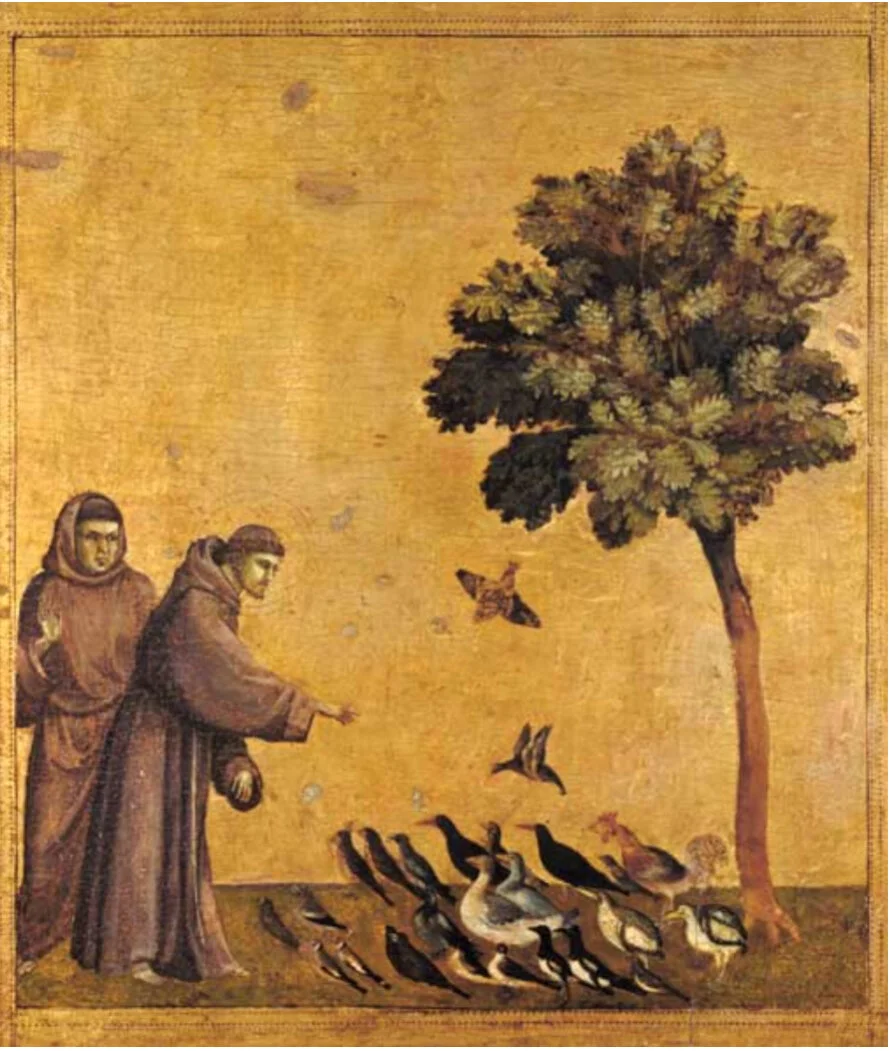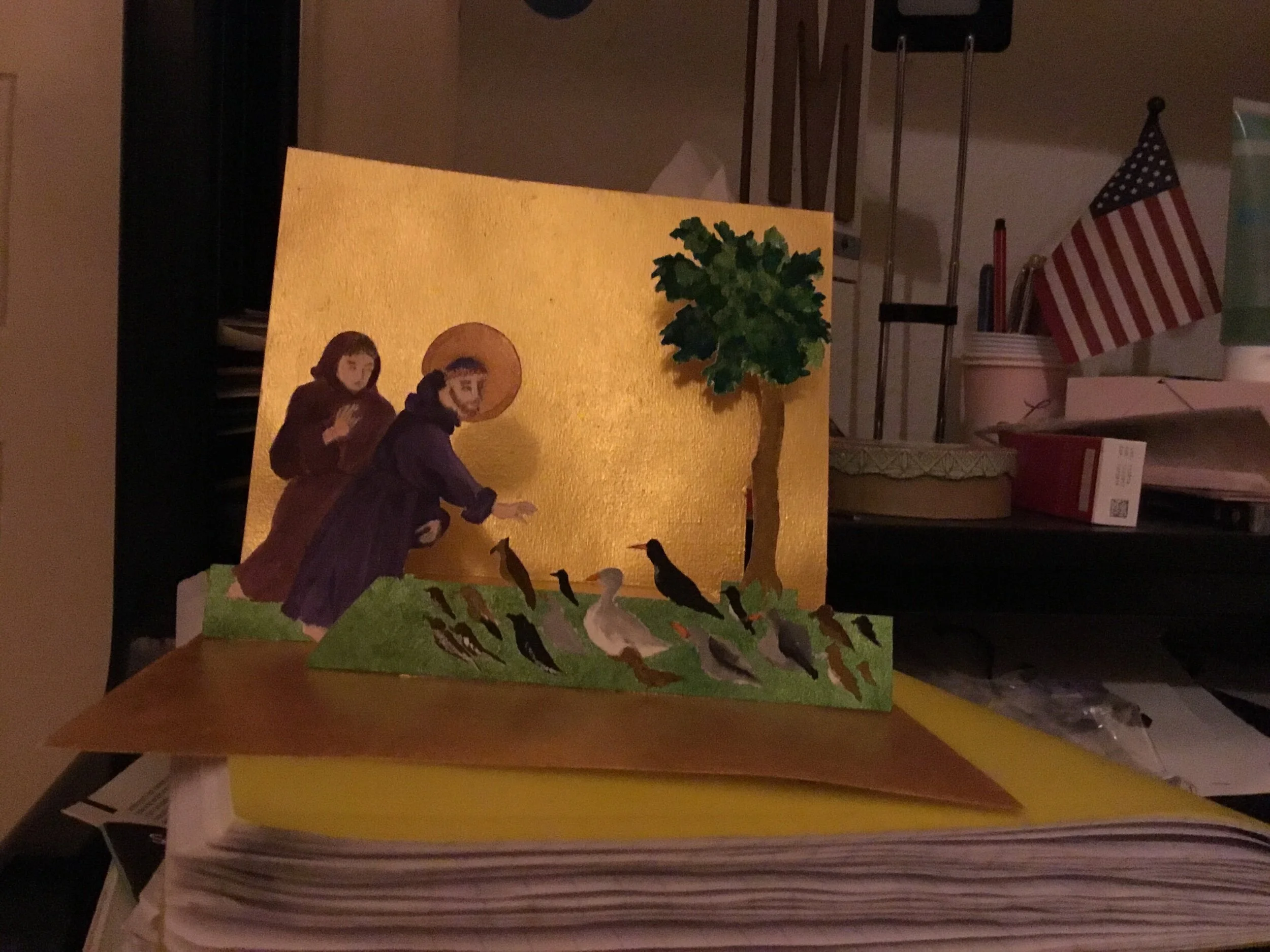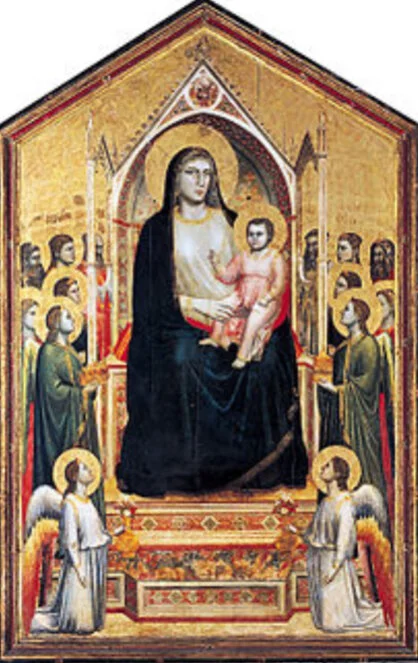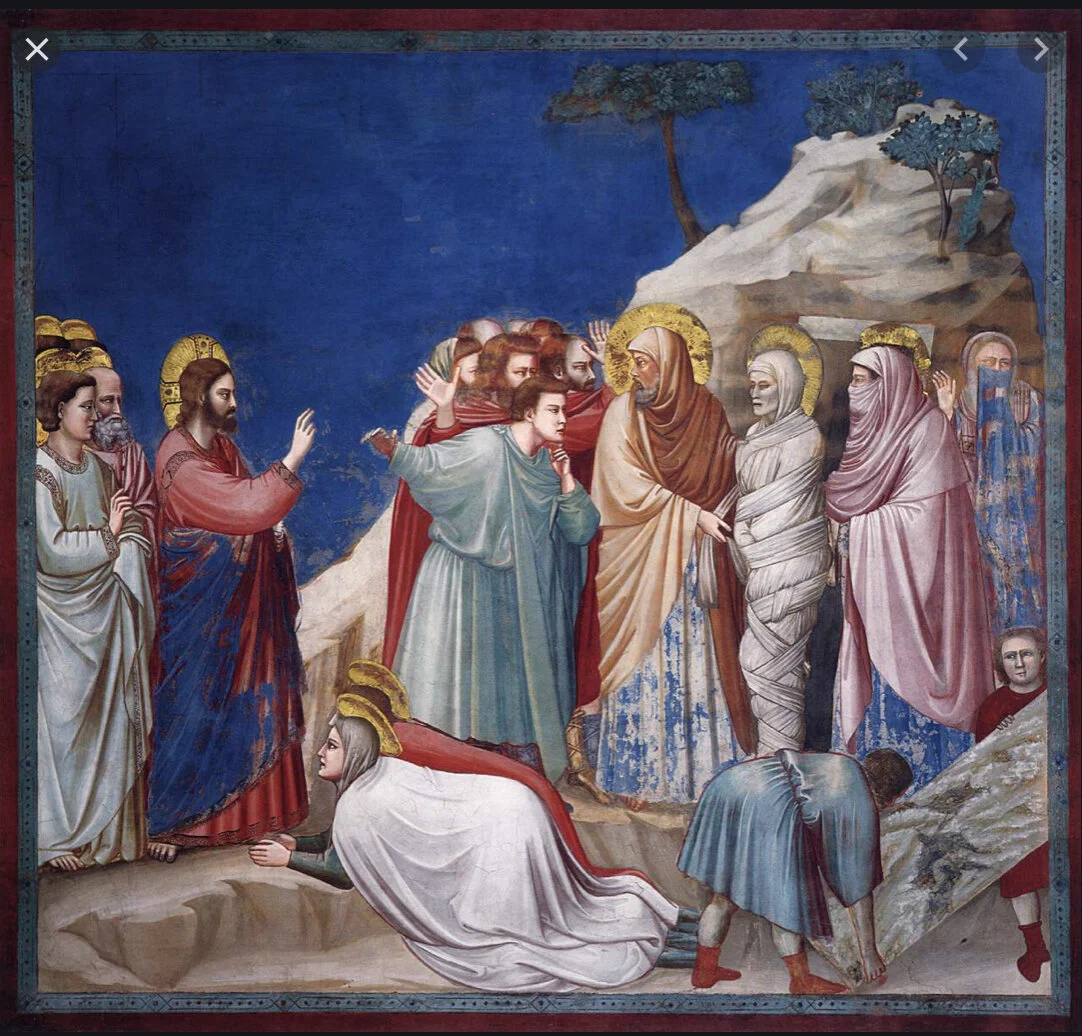Sermon to the birds
Sermon to the birds (1) is a painting by Giotto di Bondone which dates from the very early 14th century.
Giotto di Bondone, more commonly known as Giotto, was an Italian painter and architect from Florence in the late Middle Ages and the early Renaissance. Giotto's masterwork is the decoration of the Scrovegni Chapel (2), in Padua, also known as the Arena Chapel, which was completed around 1305. The fresco cycle depicts the Life of the Virgin (3) and the Life of Christ (4). It is regarded as one of the supreme masterpieces of the Early Renaissance. He was chosen by the Commune of Florence in 1334 to design the new Campanile (5) of the Florence Cathedral. Little about his life is known and his artworks are some of the only certainties about it. A lot of his work gravitated around the subject of St Francis and the Franciscan order or biblical stories.
From a stylistic aspect, Giotto was very modern and innovative. His figures are not stylized or elongated and do not follow the Byzantine models of his contemporaries. They are solidly three-dimensional, have faces and gestures that are based on close observation and are clothed in garments that hang naturally and have form and weight. He also took bold steps in foreshortening and with having characters face inwards, with their backs towards the observer creating the illusion of space. An example of that is his painting Sermon to the birds. We can observe the robes falling in a realistic way around the characters’ bodies, they are facing the birds not the spectator, they are three-dimensional...
At the time the characters represented by the artists were two-dimensional, would always be facing the audience and stand on the same ground, and wore swirling formalized drapery as clothing. He sets his characters as if they were on a stage using perspective effects and this invites the viewer to be involved in the painting to some extant. That was also very new at the time. Giotto's depiction of the human face and emotion sets his work apart from that of his contemporaries. Besides his pivotal contribution to the development of a new realistic visual language, Giotto might have also been responsible for the reintroduction of true fresco technique to Western art. The technological development allowed the creation of more-durable murals with unprecedented colors and brilliance.
Giotto was an artist very appreciated by his contemporary and the Pope, and has left a very rich artistic heritage behind him and whose art was a turning point between the style fancied during the Middle Ages and the one during the Renaissance. Nowadays, some of his work is still famous all around the world, such as the Campanile of the Florence Cathedral.
In this painting, we can see St Francis and a monk preaching to birds under a tree. We know they are part of the Franciscan order because they are wearing simple robes, have a tonsure and are barefoot. We recognize St Francis because he is the one interacting with the birds and because he has an aureola. The Franciscan order was founded by St Francis of Assisi and dictated to its followers to live simply and to be as poor as possible. Poverty is a main principle of this order as is helping those in need. The pillars of the clergy during the Middle Ages were Ora et Labora ( study and work) but the Franciscan order was more about the Labora than the Ora contrary to most clerical orders. In the Middle Ages, monks wouldn’t leave their abbeys but St Francis thought that he was more needed in cities. This was a novelty. We can draw a comparison between St Francis and Giotto because they both introduced novelty (in the art technique and in the clerical lifestyle) to what was the norm during the Middle Ages and had an impact that we can still observe today in our modern era.
St Francis is often associated with birds and his being depicted interacting with them in one way or another is very common. The birds usually represent the monks who are his missionaries who are supposed to “fly off” to spread Christianity all around the world and convert new Christians. In an excerpt from a collection of legends that spread after St Francis’ death written by Fioretti, St Francis is talking directly to the birds, urging them to preach Christianity. he calls them his ‘little sister the birds’ and tells them that they ‘ought to sing his ( the Creator) praise at all time and in all place’. This interaction shows how close to the birds, who are a metaphor for people, St Francis is and how important he thinks it is to spread the Christian faith. The sentence ‘the preaching of the Cross of Christ, renewed by St Francis, would be carried by him and by his brethren over all the world’ shows that converting new Christians was his ultimate goal. Sermon to the birds is an illustration of St Francis’ sermon as many artwork at the time were illustrations of biblical stories. We know that this is an illustration because St Francis asking the birds to spread Christianity is literally refers as ‘Sermon to the birds’ which is the name of this painting! We also notice two birds rushing towards the flock of birds already on the ground to listen to St Francis’ words and instructions. The birds are dedicated to his words and ready to act out his instructions. St Francis is leaning towards them which shows the tight bond the birds and he share.
Comparison between classic Medieval artwork made by Giotto and one of his contemporaries, Cimabue : This allows us to compare different techniques which were used during the same time.
We can see that Giotto’s rendition of a similar subject as Cimabue is very different for he is using an innovative style as mentioned above. Most of his contemporaries’ works resembled Cimabue’s painting style and we can see how modern Giotto was and how much he stood out.
Cimabue’s work (left), Giotto’s work (right)
referenced artwork :
1) Sermon to the birds; 2) The interior of the Scrovegni Chapel; 3) Life of the Virgin; 4) Life of the Christ; 5) The Campanile of the Florence Cathedra










